It was about 1 p.m. when the odd man with a teddy bear strapped to his chest showed up at the main gate to RAF Mildenhall in England. He was from the Secret Service, he said, as he attempted to show the guard a British passport as identification.
“This is a matter of national security, and I must speak to the president,” he said.
Seconds later, he gunned the engine, tires squealing, through the gate and easily swerved around a pop-up barricade. The shocked guards quickly radioed an alert: There was an intruder on Mildenhall — and nobody knew what he was going to do.
Miraculously, the ensuing chase, in which multiple shots were fired, ended with no injuries to the unidentified man aside from some bumps and scrapes during his eventual arrest.
But in those hectic 20 minutes, he was still able to drag a security forces airman; breach Mildenhall’s flightline; drive across active taxiways under the wings of two parked C-130s and within a few feet of a taxiing KC-10; and attempt to drive up the ramp of a parked Osprey. It ended when a security forces airman in a car rammed the intruder’s vehicle, pinning it against that same Osprey.
The teddy bear, which was torn to pieces during his ensuing arrest, was the only casualty.

The Dec. 18, 2017, gate breach incident at Mildenhall prompted the Air Force to do some serious soul-searching about how it handles base security — both in terms of infrastructure and its security forces’ tactics, training and procedures — and make changes to ensure something like that doesn’t happen again.
After all, what if that hadn’t been a teddy bear strapped to the man, but something more nefarious?
“It was something of a wake-up call for us,” said then-Brig. Gen. Andrea Tullos, who was the Air Force’s director of security forces, in an Aug. 9 interview at the Pentagon. Tullos has since pinned on her second star and is now commander of the Second Air Force. “That will remain a studied case for us for years and years. Hopefully, we won’t have another one.”
Air Force Times obtained documents on the incident, including a use of force review, witness statements, a two-star general-led Tiger Team’s review, and emails between Air Force leadership via the Freedom of Information Act.
A bizarre breach
The guards at Mildenhall’s Gate 15 knew right away they had a situation on their hands when the man pulled up in a black Volvo station wagon with a 2-foot, brown teddy bear buckled to his chest.
He admitted he lacked identification proving his claimed Secret Service status, and asked an airman guarding the gate if she had ever met anyone in that agency. The guard told him that she had not and asked to see some other ID.
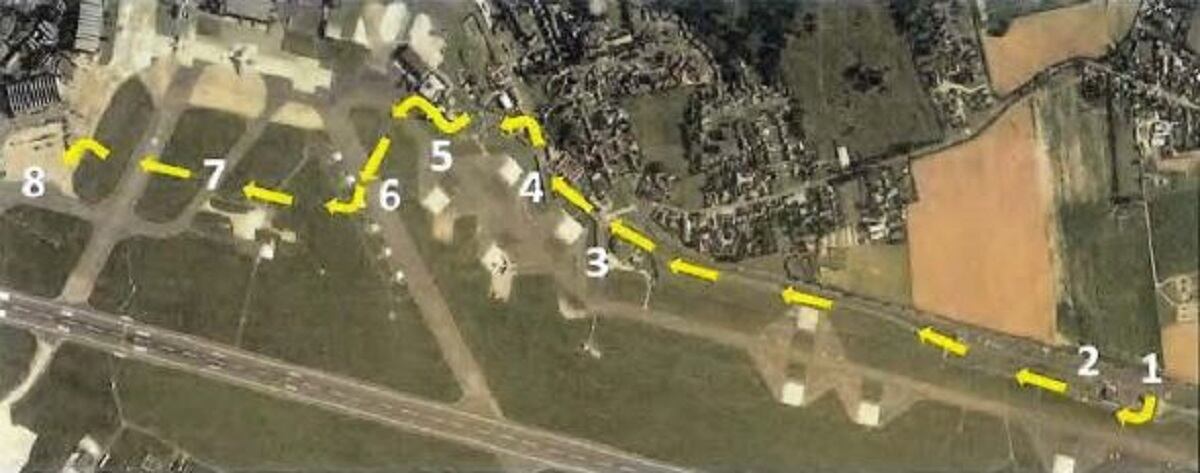
ERRATIC JOURNEY
A disturbed individual driving a black Volvo XC70 station wagon managed to get onto RAF Mildenhall Dec. 18, 2017. 1. (1300 hrs) Subject arrives at the main gate and is refused entry. He runs the gate; guards activate pop-up barriers. 2. (1306 hrs) He maneuvers around a raised barrier and through a gap. 3. (1307 hrs) He attempts to enter airfield, but encounters a locked gate near the fuel area. 4. (1311 hrs) He maneuvers through a roadblock and is fired uoon 11 times. 5. He enters the airfield. 6. He drives under the wings of two parked C-130 aircraft. 7. He drives in front of a taxiing KC-10. 8. (1320 hrs) He attempts to enter a CV-22 with his vehicle and is apprehended. (Tiger Team Review of Unauthorized Vehicle Access at RAF Mildenhall, UK
♦ ♦ ♦
When the man produced a British passport, the guard told him that was not valid to get on base. He began to get agitated insisting over and over again that he was Secret Service and needed to get on base. He then clenched the teddy bear and began to shake back and forth in his seat, the guard later told investigators. The car slowly pulled forward.
Another guard told the man to calm down and stop driving. Instead, he quickly accelerated past them. A guard left the shack and activated the pop-up barriers that were intended to block an intruder’s vehicle in just this sort of a situation.
But this gate had a serious flaw. In 2012, a fence and light pole by the main gate’s westbound vehicle barrier was moved to create a safe lane for joggers. This added about three feet of space and created a non-regulation 93-inch gap in the containment area that ordinarily would have entrapped a gate-running vehicle when the barrier popped up.
As a result, the intruder simply drove his 74-inch wide vehicle around the pop-up barrier and through the gap, with about 9 inches to spare on either side. He then turned west on Squawkin Hawk Highway.
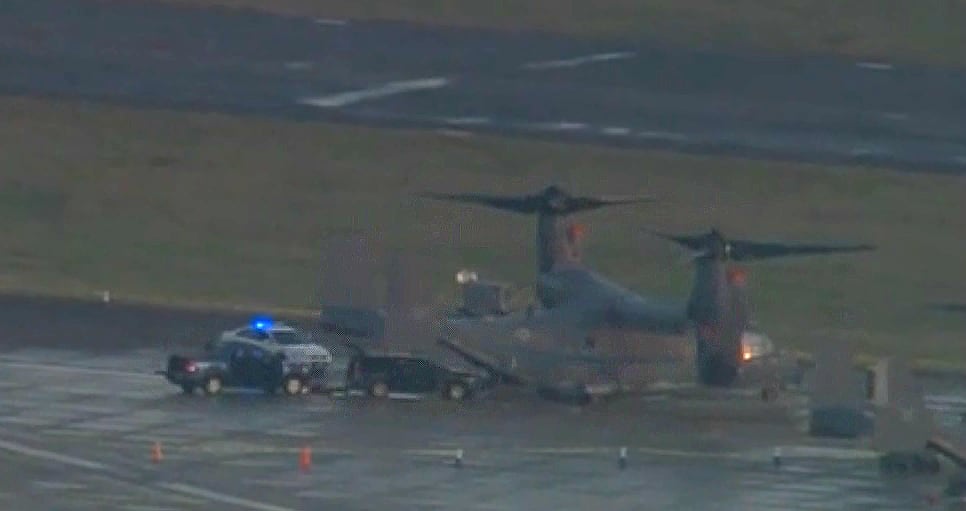
“Gate runner, gate runner, gate runner,” a guard radioed to the Base Defense Operations Center, along with a description of the vehicle. And just like that, the intruder was loose on RAF Mildenhall.
The base immediately went on lockdown. Security forces scrambled to respond — with some leaving their flightline positions in the frenzy, leaving it partly unguarded, Tullos said.
The intruder proceeded a little more than half a mile and tried to enter the airfield for the first time, but was foiled by a locked gate.
One defender, a senior airman, responded and encountered another black Volvo, driven by a lieutenant colonel headed in the same direction on the same road. He stopped the lieutenant colonel’s car while the intruder pulled up directly behind them.
The senior airman soon concluded the lieutenant colonel was not the intruder and drove on his way — past the intruder’s vehicle, without stopping, challenging or blocking him.
Two other base defenders, a master sergeant and a technical sergeant, set up a roadblock with their patrol vehicle to intercept the intruder. Once again, the lieutenant colonel in his own black Volvo was stopped. When the NCOs started to apprehend the officer, the senior airman noticed what they were doing and turned their way, again passing the intruder.
That’s when security forces realized who the real gate runner was. They approached his vehicle and demanded he roll down his window. The driver “appeared to be mentally disturbed and ‘was not right,’” the report quotes a base defender as saying.
RELATED
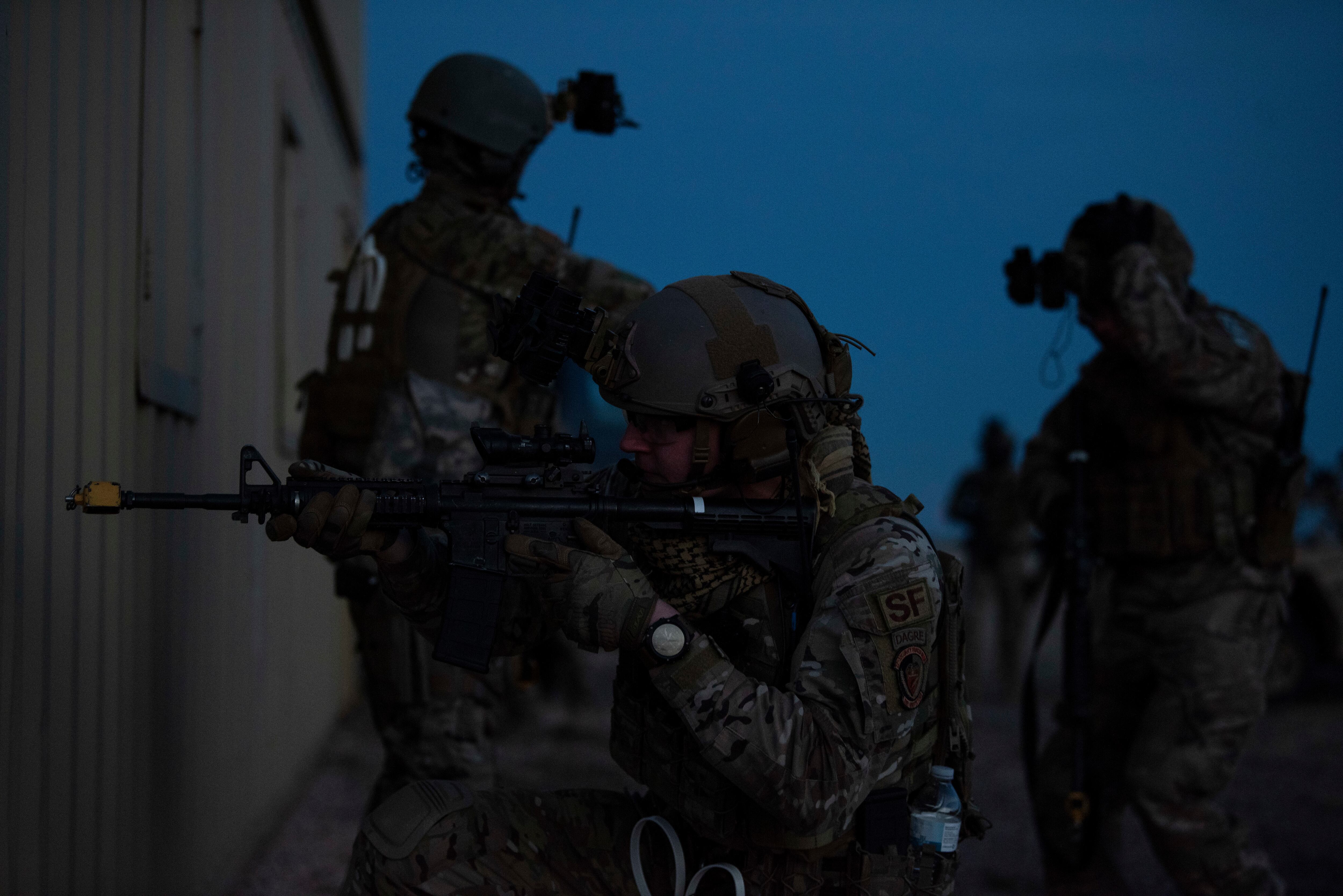
The intruder tried to drive around to the left of the senior airman, who raised his hands and yelled, “Hey!” When the master sergeant and tech sergeant approached, the intruder finally stopped. The tech sergeant ordered him to turn off his car three times, but was ignored.
The tech sergeant then tried to reach into the car to turn off the ignition himself, but the intruder accelerated directly toward one of the base defenders, forcing him to jump out of the way. The lieutenant colonel was also nearly hit.
Defenders on the scene believed the driver was a threat, at least with his vehicle. At least one thought the object strapped to his chest was a suicide bomb. Three of them then opened fire with their M9 service pistols, riddling the car with bullets but failing to stop the driver.
Yet another security forces airman, a staff sergeant, grabbed the vehicle’s door frame and held on tight as the driver drug him about 30 feet across the icy pavement. That defender saw his own vehicle parked in the intruder’s path and feared the intruder was going to drag him into it, so he let go. He charged his M4 rifle and fired twice.
In all, 11 shots are believed to have been fired at the driver. A Use of Force Review Board that investigated the incident concluded the four officers lawfully used deadly force, according to a summary of the investigation.
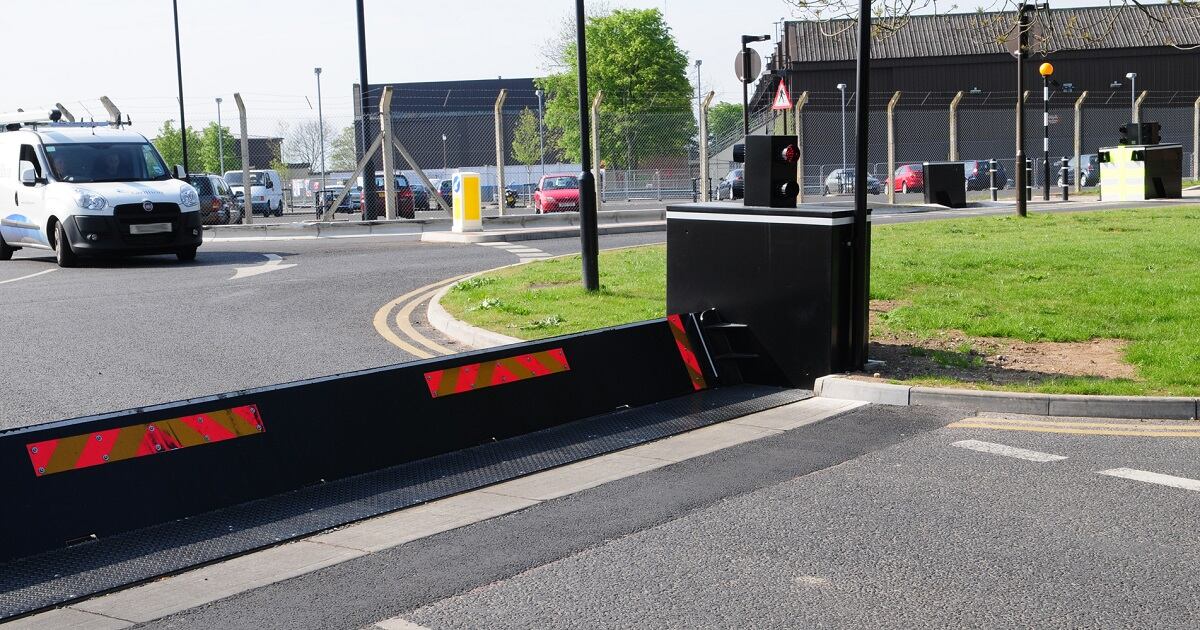
The intruder fled with security forces in hot pursuit. He took the first left and made it onto the airfield through an open gate near the base’s air traffic control tower. He drove across paved and unpaved surfaces, under the wingtips of two parked C-130s, toward the parking area for CV-22 Ospreys.
At that same time, a KC-10 from the 78th Air Refueling Squadron at Joint Base McGuire-Dix-Lakehurst in New Jersey had just rolled off the runway and on to the taxiway. An air traffic controller told the pilots to stop and the pilot slammed on the brakes. Seconds later, the air crew saw the intruder’s vehicle speeding through the grass towards their nose landing gear. It passed as close as 20 feet from the left side of the aircraft, then sped away. About 10 seconds later, two security forces vehicles followed.
The intruder made it to the parked Ospreys and tried to drive up the ramp of one. Security forces spotted his vehicle and moved to intercept as he was trying to back away from the tilt-rotor.
The cops surrounded the driver. An officer rammed the intruder’s vehicle, immobilizing it against the Osprey’s rear ramp. They pulled the gate runner out of his car and down to the ground, where they handcuffed and frisked him.
The teddy bear “was torn apart during the apprehension,” the report said.
Why it happened
The Mildenhall breach ended relatively well. Aside from the intruder’s scrapes, nobody got injured and, contrary to initial reports, no aircraft were damaged. But the close call stunned Air Force leadership.
“It is a sober reminder of the challenge we face with miscreants,” Gen. Tod Wolters, then head of U.S. Air Forces in Europe-Air Forces Africa, said in an email to his wing commanders the next day. Wolters convened a Tiger Team, headed by a two-star general, in February 2018 to look into the incident, identify mistakes and make recommendations.
That team soon found several mistakes that allowed the breach. First, the team said, Mildenhall’s 100th Air Refueling Wing failed to ensure that moving the fence would not violate standards and create a vulnerability.
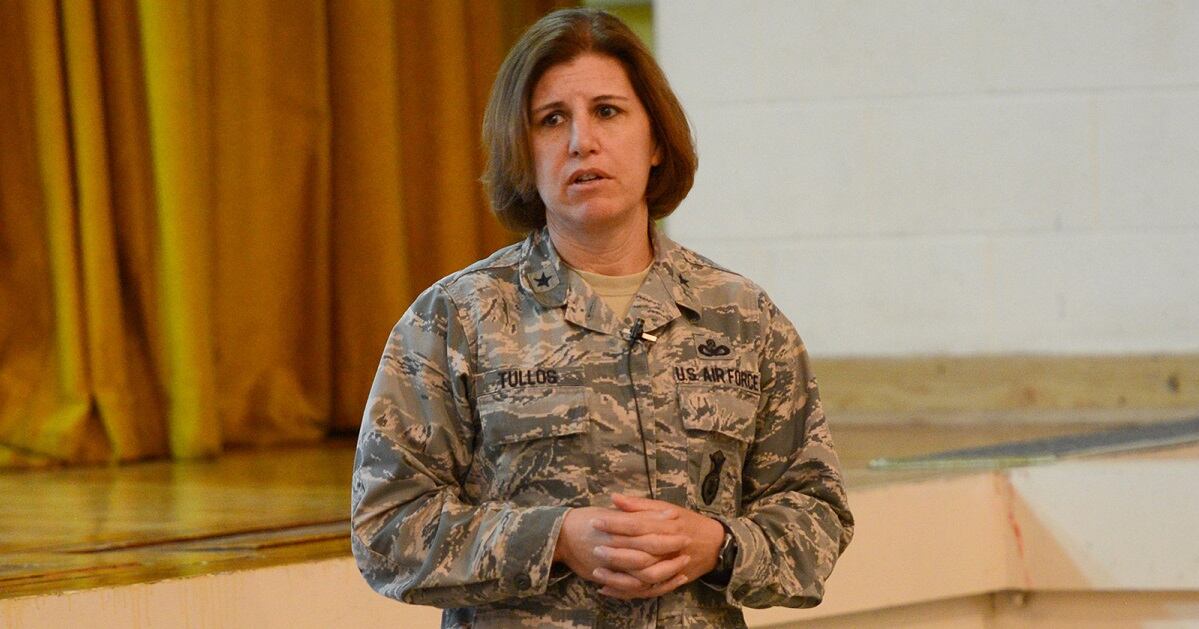
In an Aug. 15 statement to Air Force Times, Col. Troy Pananon, the current commander of the 100th ARW, said that has now been fixed. Pananon also said the base has put into place “robust training” and new tactics, techniques and procedures for the base’s defenders. Mildenhall has also significantly increased physical security measures, he said.
The Tiger Team also identified mistakes made by the base and some security forces officers that kept them from deterring a “less than Level I threat.” (A Level I threat is typically an enemy agent or terrorist seeking to conduct espionage, sabotage or subversion. A Level II threat could include small-scale, irregular forces conducting unconventional warfare, the team’s memo said.)
Mildenhall’s Installation Defense Plan wasn’t in line with Air Force regulations, the memo said. Security force patrols weren’t posted in accordance with the installation commander’s priorities.
The memo also points out that although multiple defenders shot at the intruder — with seven bullets striking the vehicle, some penetrating the driver’s compartment — their “high risk traffic stop and weapons engagements” failed to stop him.
Previous Air Force personnel reductions hurt Mildenhall by eliminating all of its installation-level anti-terrorism and force protection positions, the report said.
But investigators largely praised the responding security forces officers for their initiative and quick response after the gate runner call, though their response was not in accordance with procedures.
“Some of the responding [security forces airmen] took noteworthy individual actions in a complex, high-stress scenario,” the memo said. “Additionally, [security forces] exhibited confidence in the use of force when the threat was established.”
Widespread changes
But the reviews didn’t stop at Mildenhall. Tullos said it prompted the entire Air Force to review how it approaches base security and make changes.
“The Mildenhall case caused us to look at every single installation access point in our entire Air Force that we own as a service, total force, Guard and Reserve, inspect every single one of them,” Tullos said. “It caused us to look at a lot of our tactics, techniques and procedures to say, why did this happen instead of this?”
“How are we training our airmen?” she continued. “How are we defending our installations? What does it mean to have to have a capability to deny access to an airfield? That’s our bread and butter. Even if they’re benign, I don’t want someone on our airfield who doesn’t belong out there.”
The biggest change, she said, was to move away from the Air Force’s “one-size-fits-all” approach to security at installation access control points. No matter where a base was, stateside or overseas, out in the boonies or right next to a city, the Air Force gave all its installations the same criteria on what access points should look like. If a base couldn’t meet that standard, it had to document why.
“Every access point is different,” Tullos said. “Meeting all of that criteria everywhere we found to be cost-prohibitive. We found we were driving an extraordinary administrative workload both on our engineers and our commanders to document why they couldn’t meet it. And in some cases, when we looked at the access control point, we said, ‘This is ridiculous. We don’t have to meet all this criteria here; it’s in the middle of nowhere.’ ”
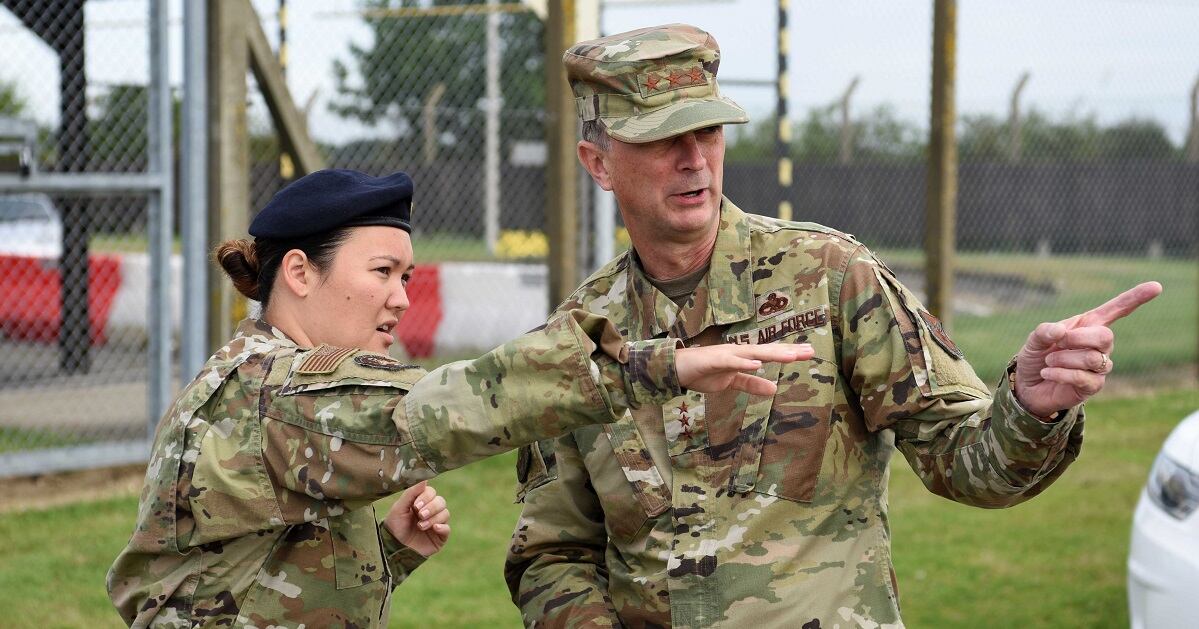
For example, she said, many installations — particularly large ones — have a back gate used to bring in bulk munitions, hazardous materials or other shipments that would present a safety risk coming through the main gate. Those shipments happen infrequently, she said, maybe once a quarter.
So it makes more sense — in terms of time, effort and taxpayer dollars — to secure a back gate with physical infrastructure preventing someone from crashing through it and cameras to remotely watch for any possible breach, and that’s about it, she said.
Other gates, such as Joint Base Andrews where the president comes to board Air Force One, might need multiple layers of physical barriers, technology and security forces airmen, she said.
Tullos’ staff sat down with engineers, lawyers and others to start working on a system of prioritizing and tiering different kinds of access control points, to see what security they do and don’t need.
That’s just about finished, she said, and the Air Force has provided that methodology to the Defense Department to see if other services could use it.
“I believe it will actually save the Air Force quite a bit of money in the long term, and it’ll help us better defend our bases,” Tullos said. “We’ve gone from a ‘defend everything as if it’s equally important’ mindset to defend what’s most important first. That’s been huge for us.”
The review also found that tactics, techniques and procedures at access points were pretty solid, Tullos said. But the Air Force needed to update some of that guidance to better reflect newer technologies such as automated entry control systems.
The Air Force wants to better use technology such as motion detectors, cameras or infrared to track intruders of any kind — gate runners, intruding vehicles or even deer. This could include using fixed cameras on towers or even small drones such as quad-copters, she said. Those could even be useful off-base, such as when nuclear weapons convoys are moved through towns, she said.
Because Air Force bases are also thriving communities where families live, go to Little League games and retirees come to shop, see the doctor and visit friends, a balance must be struck to reasonably maintain privacy. So, for example, an airman at a gate could have a quadcopter ready to launch if a car blows through.
“I think it’s going to be game-changing,” Tullos said. “I think it’s also going to be life-saving … if someone reports a child missing in a housing area.”
The Air Force will also start beefing up the vehicles some security forces drive when it receives its first Joint Light Tactical Vehicles in September, she said – but only in certain places, such as nuclear missile fields or overseas, and certainly not in housing areas.
Even with all the reforms since the Mildenhall incident, the fluky nature of its entire sequence of events still amazes Tullos.
“The statistical odds of recreating everything that happened at Mildenhall …” Tullos said, before trailing off. “Those poor guys, yep, happened to you. Those are the ones we will always point to and say, ‘This is why you never say I didn’t think it would happen. Never.'"
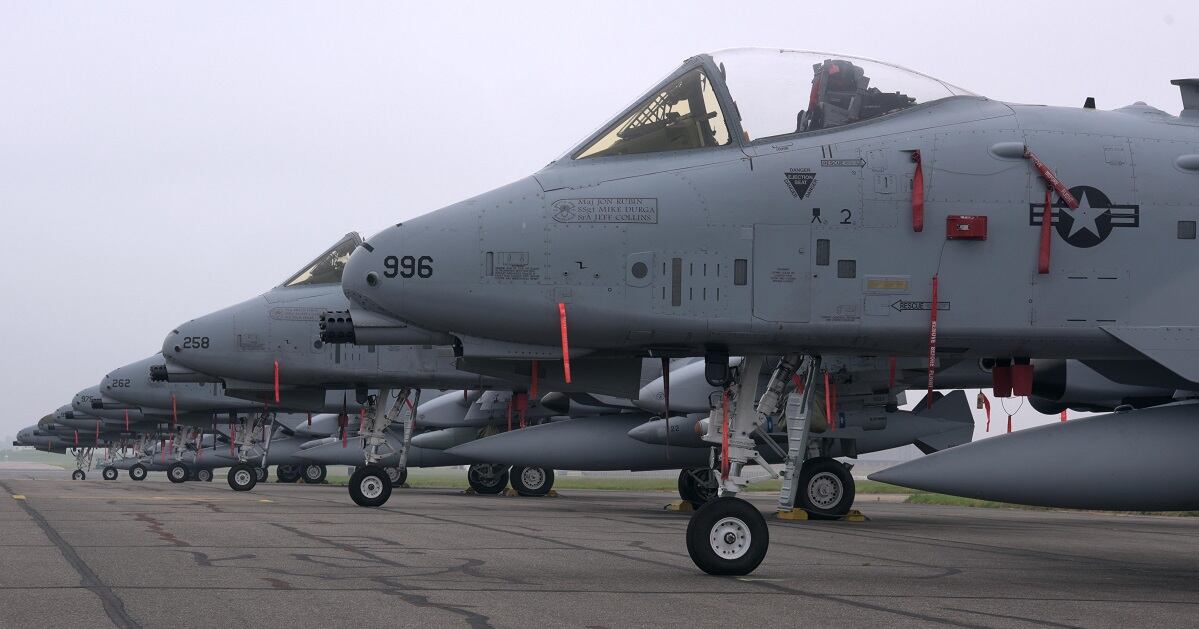
Stephen Losey is the air warfare reporter for Defense News. He previously covered leadership and personnel issues at Air Force Times, and the Pentagon, special operations and air warfare at Military.com. He has traveled to the Middle East to cover U.S. Air Force operations.





